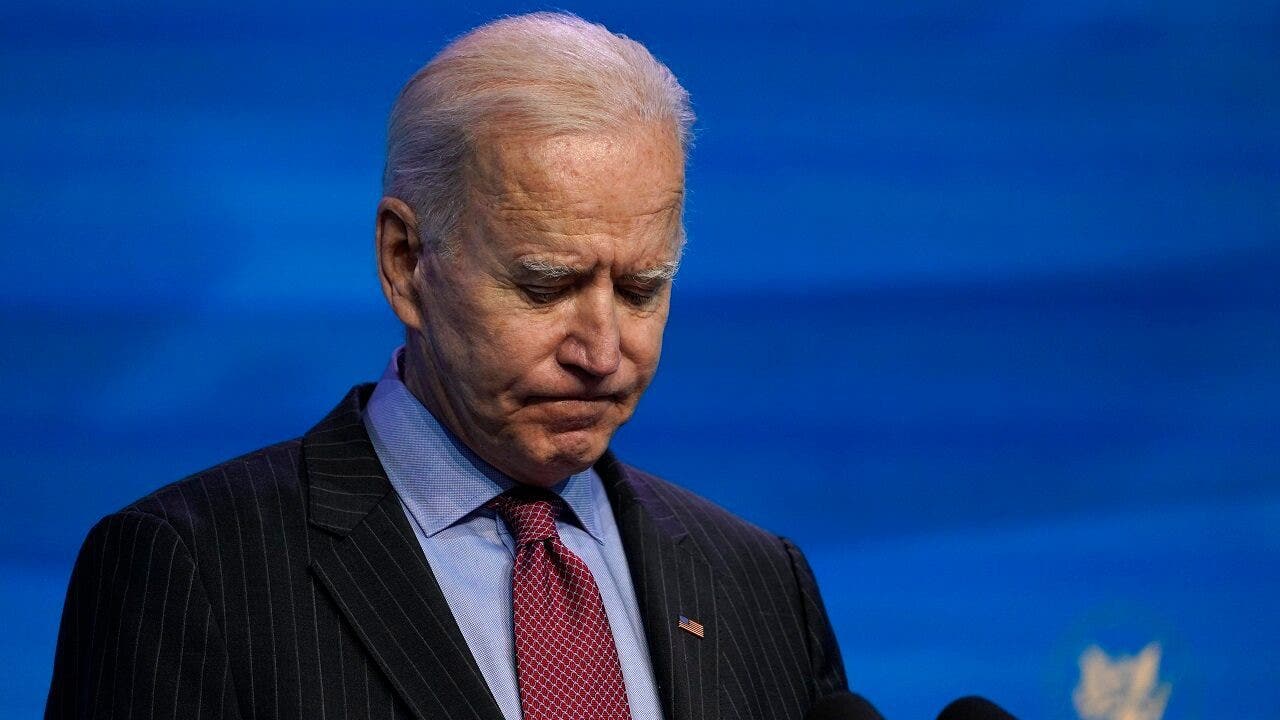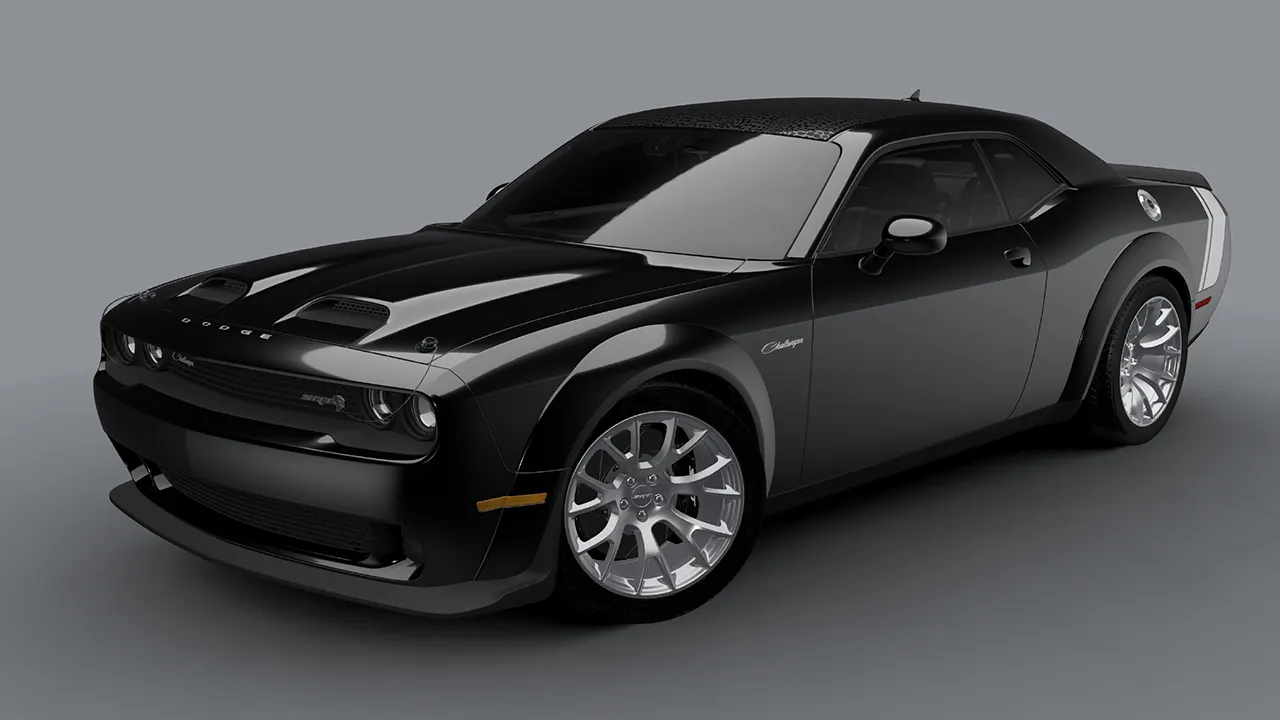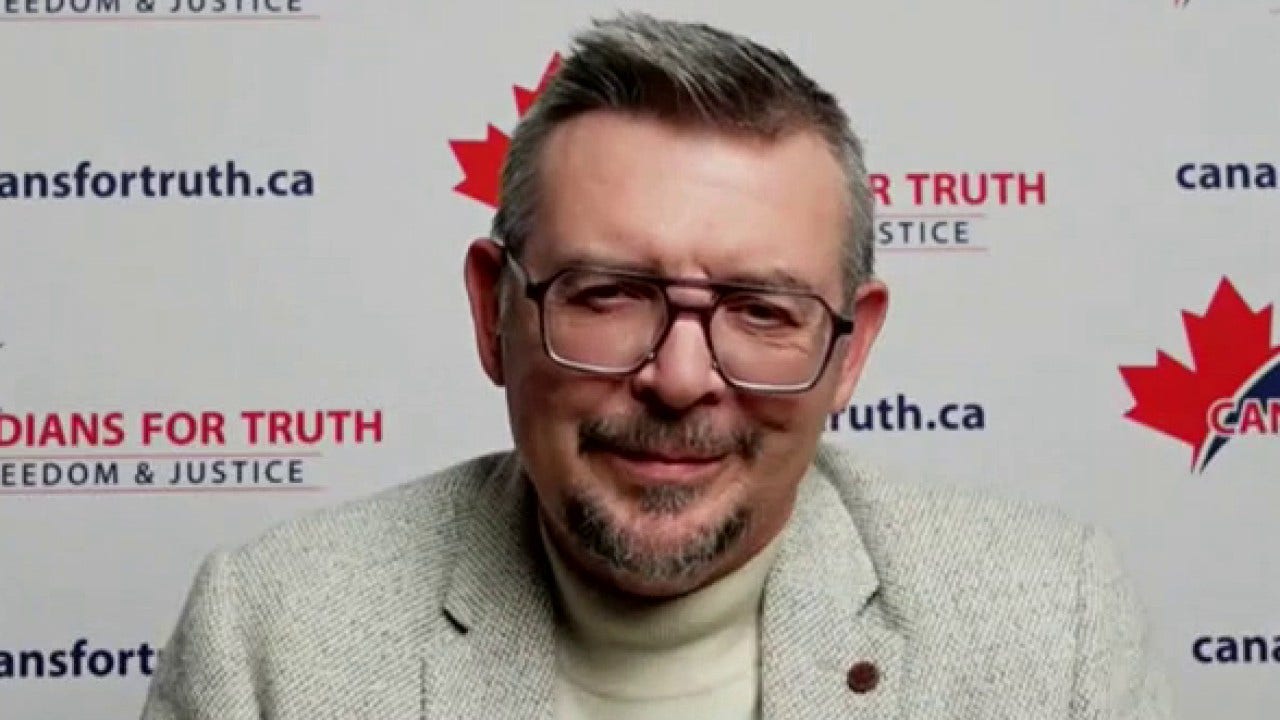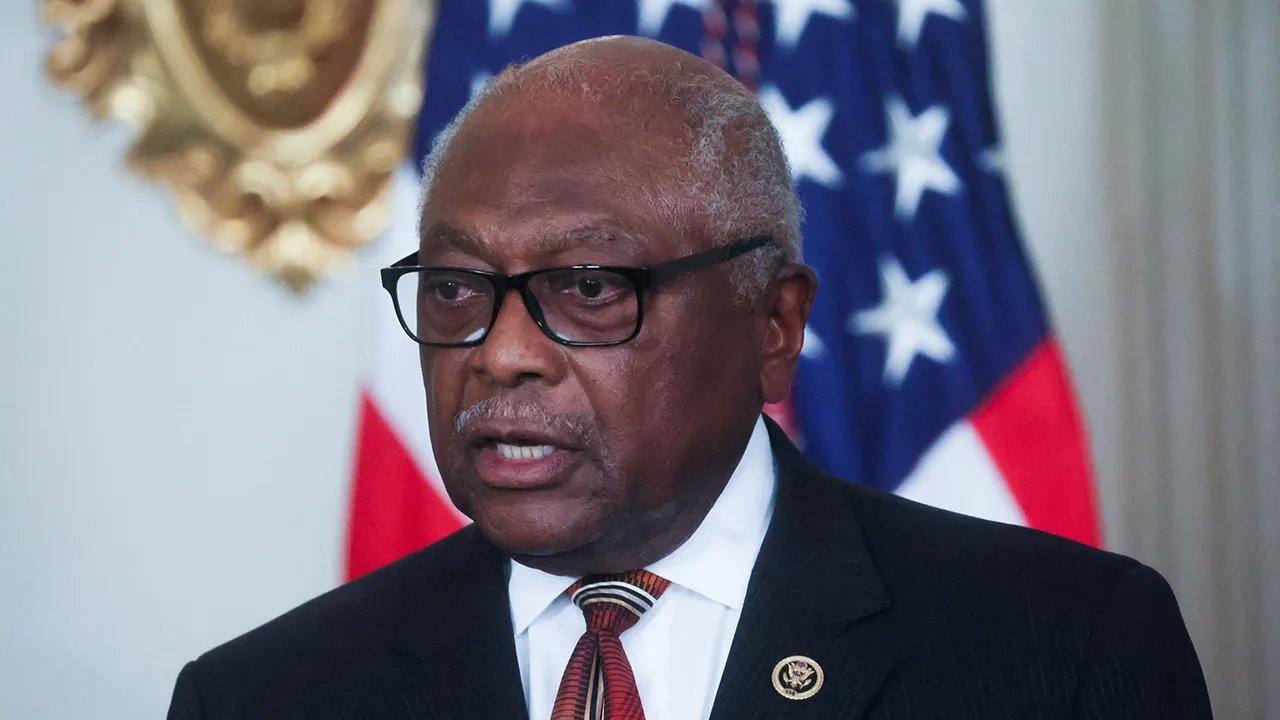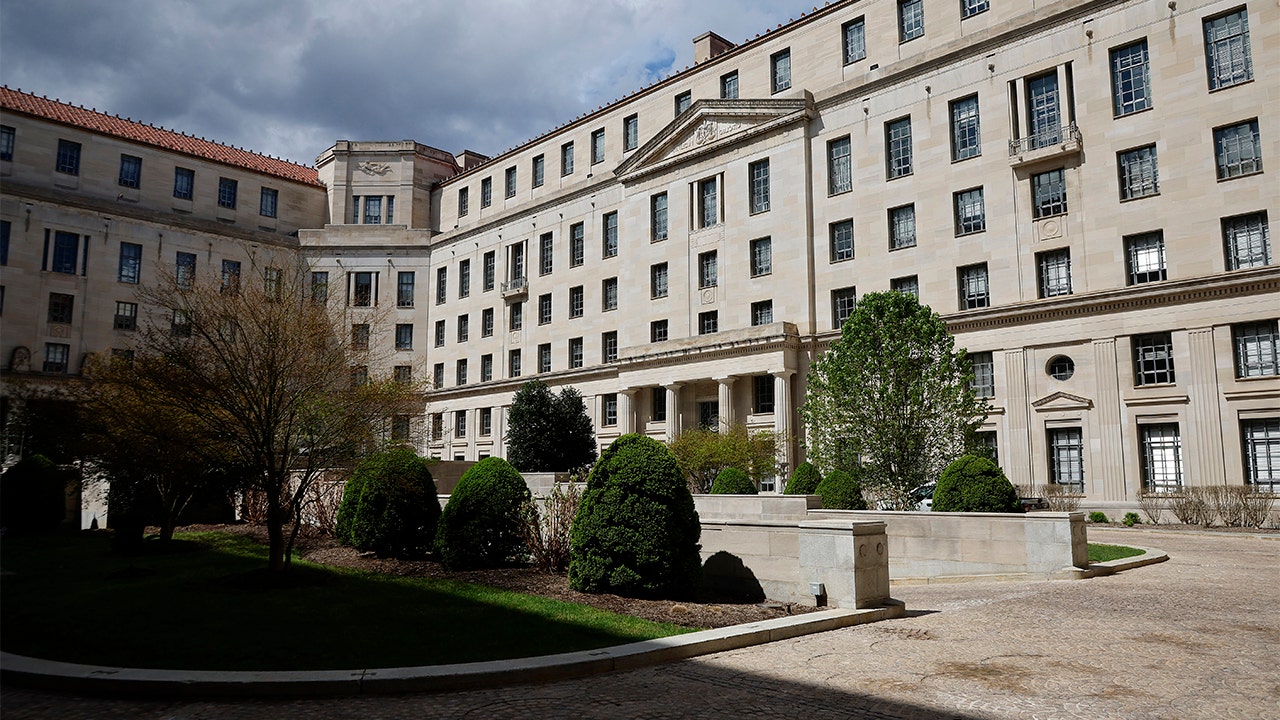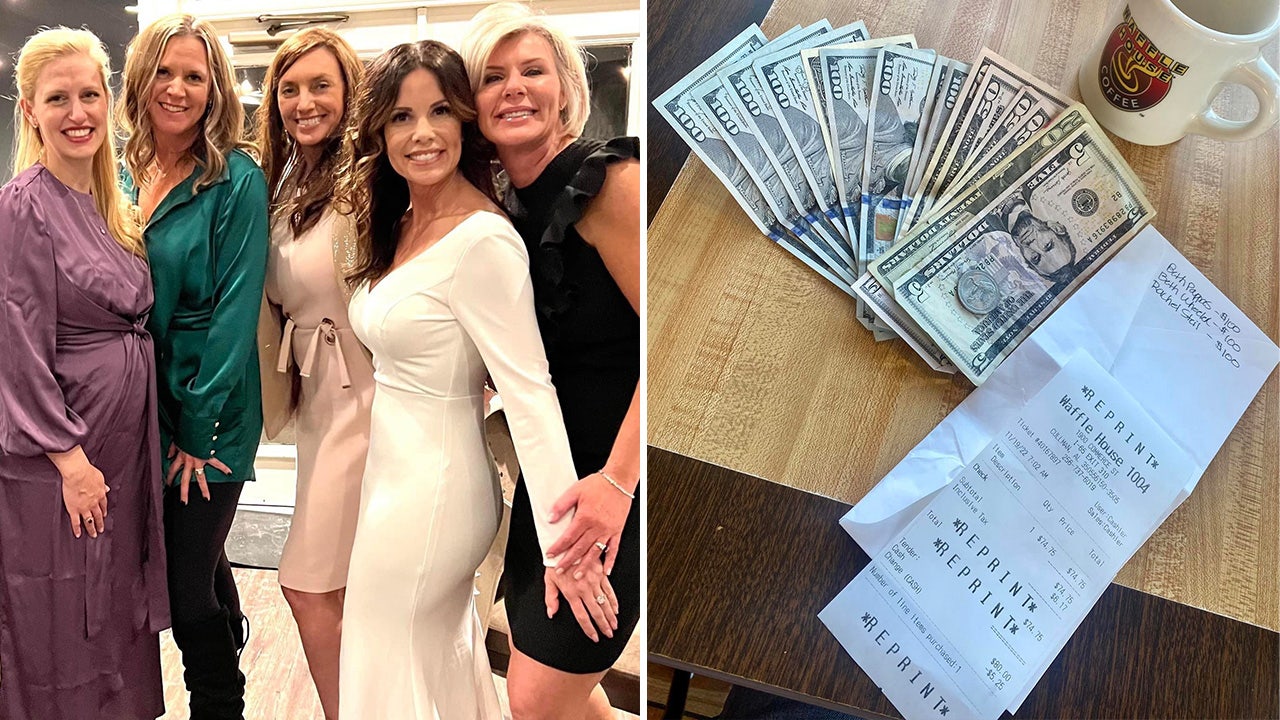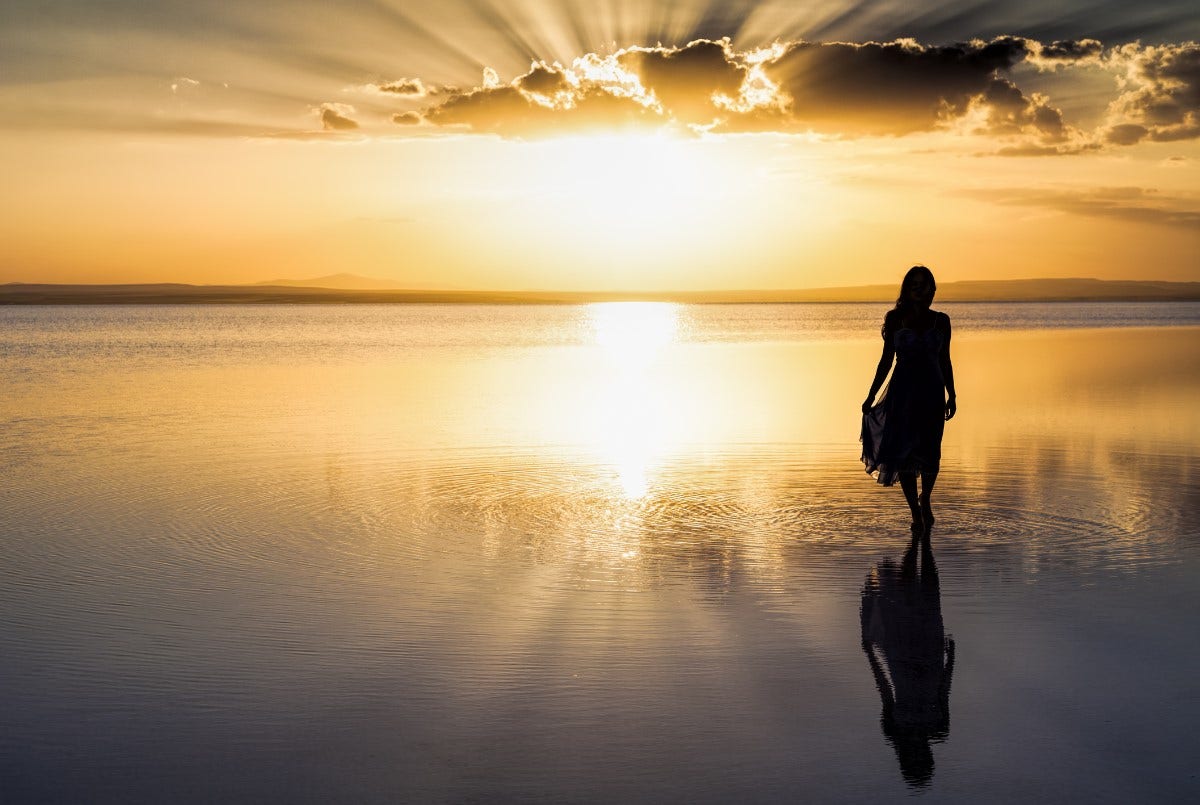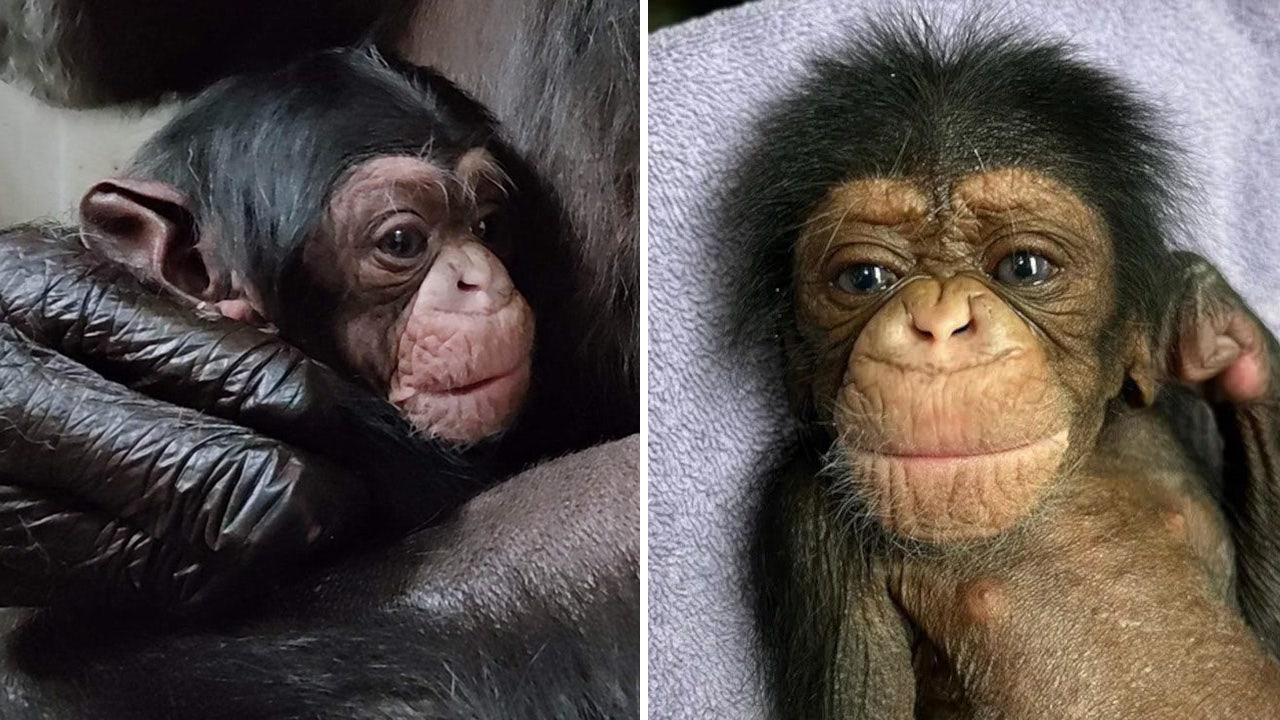Twenty years after the terror terrorist attacks, images from the day are still etched in the minds of Americans – as well as the photographers who captured them.
To mark the commemoration, Fox News gathered some of the most iconic photographs from 9/11 and spoke with photographers about their experiences.
Here are their stories.
Yoni Brook was a 19-year-old college sophomore at New York University (NYU) on September 11, 2001. He was unaware that two planes had hit the World Trade Center until he left class that day.
“[I] looked down south and saw that the buildings had just collapsed,” Brook, now 39, told Fox. “And so, I ran to my dorm.”
NEARLY 20 YEARS SINCE 9/11 TERROR ATTACKS, FIRST FDNY CHIEF ON SCENE HONORS ‘ORDINARY HEROES’
Brook said he occasionally freelanced for The Washington Post, and grew up in the D.C. area. When he arrived at his dorm, Brook’s roommate told him that editors at the Post had called to see if he was going to cover the attacks.
Brook grabbed 10 rolls of expired film and took a cab down to Canal Street. He walked the rest of the way.

Pedestrians in lower Manhattan watch smoke billow from New York’s World Trade Center on Tuesday, 9/11/01.
(AP Photo/Amy Sancetta)
“I sort of found myself – this was maybe an hour after the collapse – just there, kind of alone, seemingly alone,” Brook said. “It was just like everybody was in shock around it. There were a few firefighters, there were a few rescue people, but it was mostly very quiet and eerie for the first two hours.”
“It felt like a very unsettled feeling,” Brook added. “But I didn’t feel like I was in direct danger. I didn’t know what had happened. I didn’t have a phone. I didn’t hear the news. So I was just hearing what people were saying to each other.”
He continued: “I just thought I was photographing my little corner of this crazy moment in history. It just sounded like there was chaos all over the country at that moment.”
2 MORE 9/11 VICTIMS IDENTIFIED NEARLY 20 YEARS LATER WITH NEW DNA TECHNOLOGY
“There was an eerie quiet”
— Yoni Brook
That afternoon, Brook photographed Michael Sauer, a Woodmere, Long Island volunteer firefighter, who was drinking water from a fire hydrant.
“It was still sort of a moment of initial shock,” Brook said. “There was an eerie quiet. And there wasn’t like a ton of equipment down there. There weren’t cranes doing any work yet. It was just individual firefighters and groups of firefighters trying to make sense of a little bit of the futility of what was in front of them.”
Brook explained that Sauer had rushed to Ground Zero with a friend who was a former FDNY firefighter to “to help and to be a part of it,” Brook said.
Brook said he still keeps in touch with Sauer and they check in every year on 9/11.

Woodmere Long Island Volunteer Firefighter Michael Sauer drinks from a fire hydrant on 9/11/01.
(JZB)
For Doug Mills, the morning of 9/11 started out “like a normal day with President Bush,” he told Fox News.
In 2001, Mills was a photographer for the Associated Press based in Washington, D.C, but that day, he was covering President George Bush’s visit to the Emma E. Booker Elementary School in Sarasota, Florida, where he was planning to talk about the No Child Left Behind Act.
Mills, who is now 61 and a photographer for the New York Times’ Washington bureau, told Fox that he was in the president’s motorcade on the way to the elementary school when he first heard about a “small plane crash in New York City.”
He said that the information was “really sketchy, just basically saying there’s been a small plane that’s hit a building,” but that it didn’t seem to be a major incident.
FORMER FLIGHT ATTENDANT TO HONOR 9/11 VICTIMS BY PUSHING BEVERAGE CART FROM BOSTON TO GROUND ZERO
Soon after they got the news, Mills said they arrived at the school and headed to the classroom where Bush was scheduled to read to students before speaking to the whole school.
“A few minutes into it, Andy Card, the chief of staff for the president, walked into the room where we were,” Mills said, adding that was “highly unusual to have him walk in.”
“Finally, at one point he walked up to the president… and whispered in his ear,” Mills said, adding: “It was obvious he’d given him some very important news.”
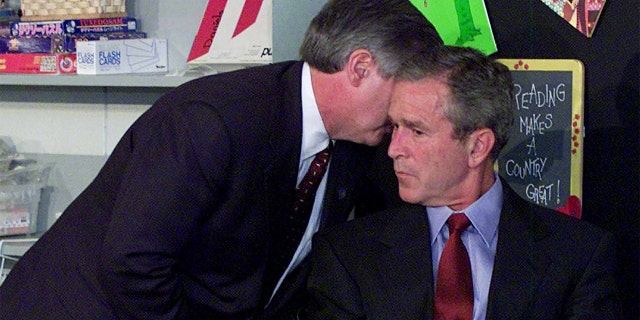
Chief of Staff Andy Card is photographed whispering in President George Bush’s ear about the terrorist attacks on 9/11/01. AP photographer Doug Mills took this photo.
(AP)
“The power and the weight of those words are obviously overwhelming and obviously very historic”
— Doug Mills
Though Mills didn’t know what was said at the time, he later found out that Card told the president: “A second aircraft has just hit the World Trade Center. America is under attack.”
“The power and the weight of those words are obviously overwhelming and obviously very historic,” Mills told Fox.
CLICK HERE TO GET THE FOX NEWS APP
A few minutes later, Bush’s meeting with the children ended and he went to another room where he addressed the school and the nation, explaining that there had been “an apparent terrorist attack” on U.S. soil, according to archival footage of Bush’s address.
From there, Bush and the press corps – including Mills – flew to Louisiana and Nebraska before heading back to Washington, D.C. Along the way, the press corps was cut down from 13 to five, with Mills among those allowed to continue to travel with the president.

U.S. Vice President Dick Cheney (R) speaks to President George W. Bush by phone inside the operations center at the White House with staff, 9/11/01, the day of the terror attacks in New York and Washington.
(REUTERS/WHITE HOUSE photo by David Bohrer ME)
“Once we got there, that’s all you smelled, you know, just something burning”
— Doug Mills
Three days after the attack, Mills covered Bush’s visit to Ground Zero. Mills said they took a large helicopter from the Air Force Base to a landing zone near Ground Zero.
Mills said that when the helicopter was about 30 minutes away, everyone on board noticed a sudden burning smell, “like the helicopter was on fire.”
“It came on so fast everybody… was looking at each other with these wide eyes like ‘What’s going on, do you smell that?’” he said.
Finally, the Marines on board explained that it was the smell of Ground Zero.
“Talk about something that hits you in the face,” Mills said, adding: “Once we got there, that’s all you smelled, you know, just something burning.”
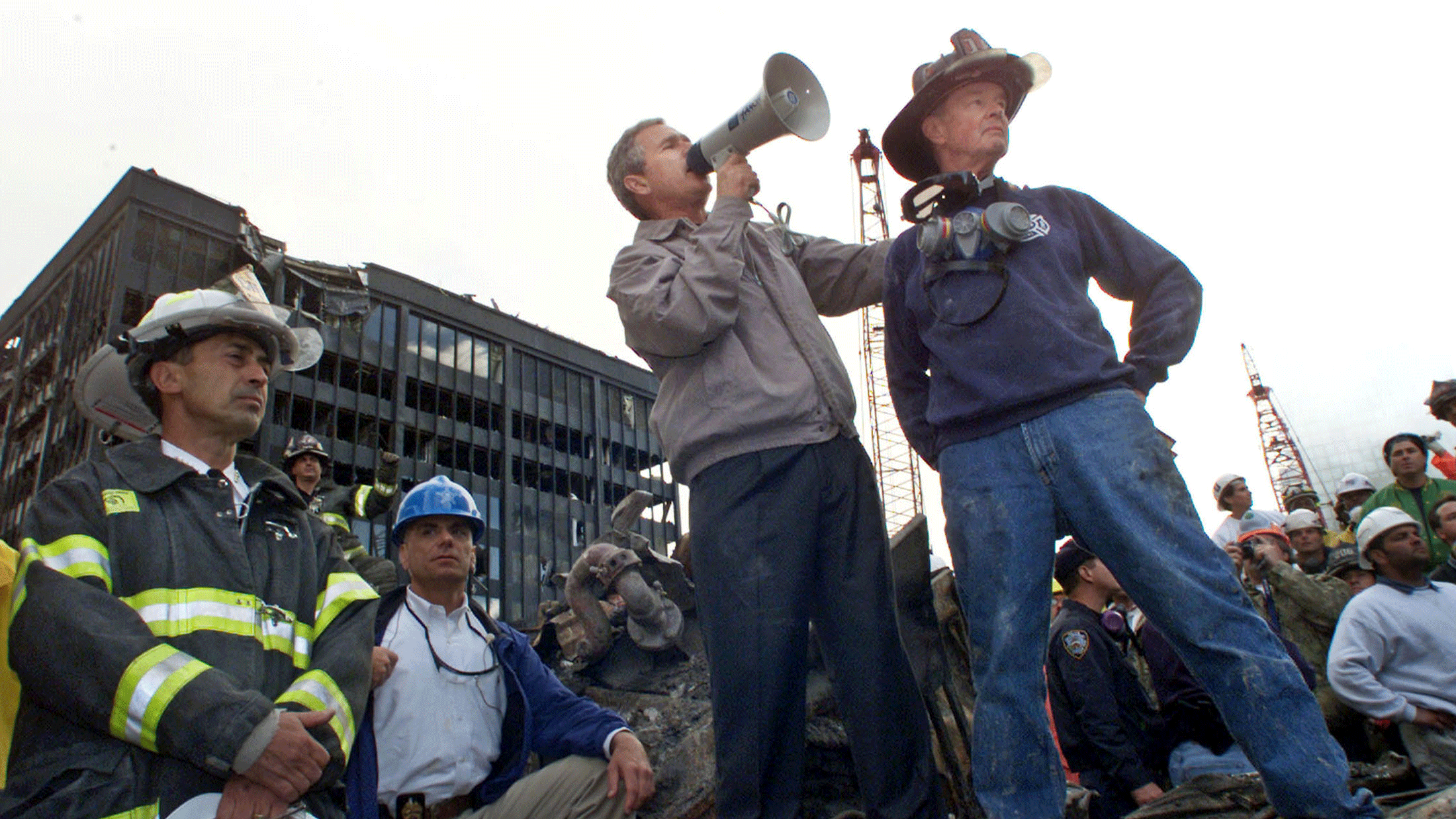
Bush is shown with retired firefighter Bob Beckwith (R) at the scene of the World Trade Center disaster on September 14, 2001.
(REUTERS/Win McNamee-Files)
“I remember how the streets of New York were just so empty that night”
— Robert Bukaty
Associated Press photographer Robert Bukaty told Fox News he was supposed to start his vacation on 9/11. Bukaty, 59, is still an Associated Press photographer based in Portland, Maine. He told Fox that on the morning of 9/11 he went into the office to pick something up and on his drive home, he turned on the radio.
“The first thing I heard was this report about what they thought was a small plane flying into the World Trade Center,” Bukaty told Fox.
He said he continued to listen to the report and soon heard about the second plane. By the time he got to his house, an editor from AP’s New York office called to ask if he could travel down to the city to help out.
“He said, ‘Don’t rush, because we have photographers there, but we’ll need somebody, we’ll need photographers because this is going to be an ongoing story,’” Bukaty recalled.
CLICK HERE TO SIGN UP FOR OUR LIFESTYLE NEWSLETTER
Bukaty said that as he packed his bag, he watched the televised reporting.
“At some point they were talking about how Manhattan was going to be closed down to all traffic … so I decided to bring my bike,” Bukaty said.
On his drive down to the city, Bukaty said no one was collecting money at any of the tolls and there were no stores open. He said he drove to Queens, parked his car in a parking garage and loaded all his stuff into a couple of backpacks and ride his bicycle over a bridge and into Manhattan.
“I got in in the evening and worked until about one or two o’clock in the morning,” Bukaty said.
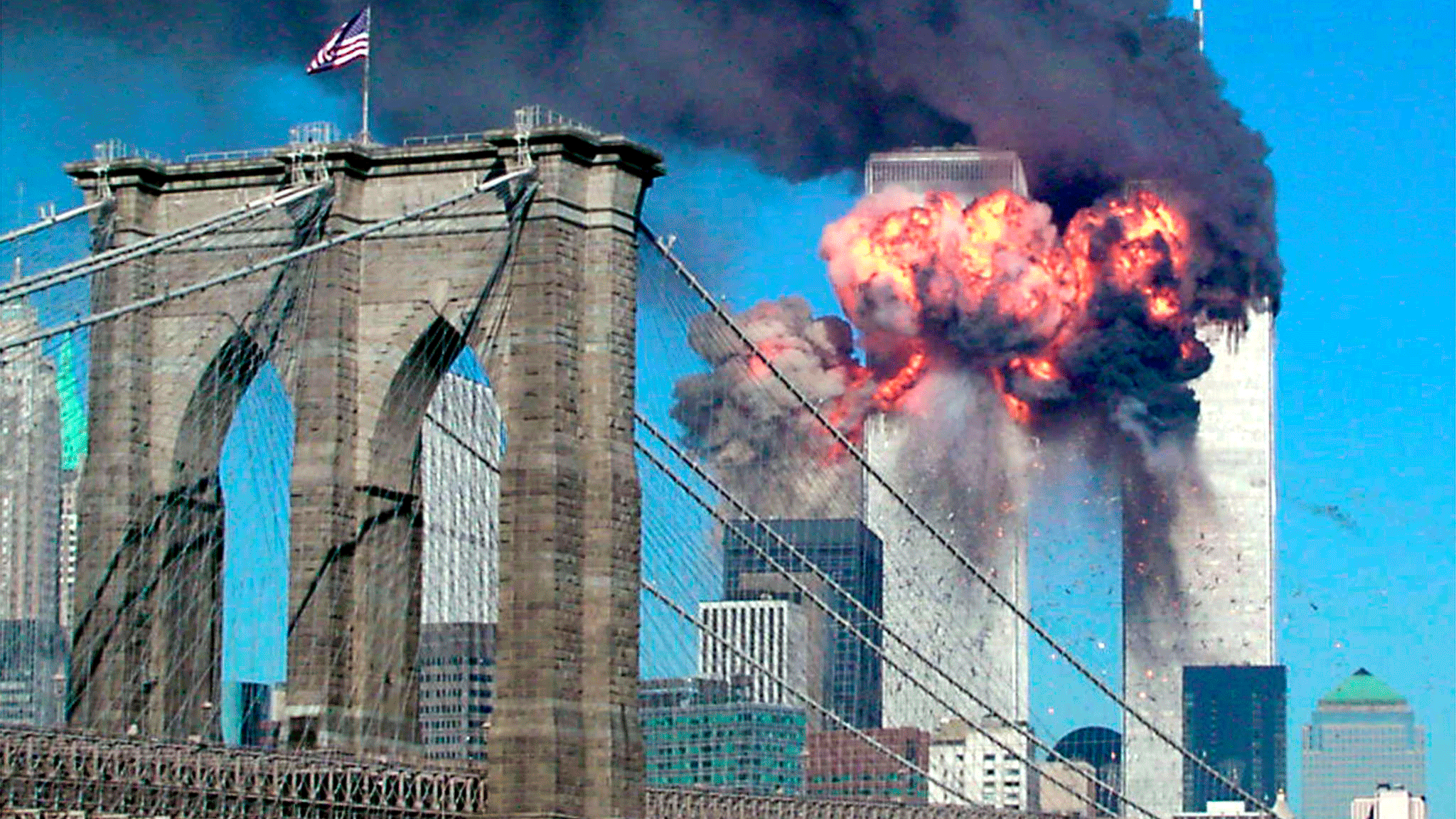
The second tower of the World Trade Center bursts into flames after being hit by a hijacked airplane in New York in this 9/11/01 file photograph. The Brooklyn bridge is seen in the foreground.
(REUTERS/Sara K. Schwittek/Files)
“It was such a strange time,” Bukaty added. “I remember how the streets of New York were just so empty that night, the first night and the next couple of days. I would ride my bike from 50 Rockefeller Plaza down towards Ground Zero for assignments … and there were no cars.”
Bukaty said that as he was walking around Ground Zero and taking photos, his main focus was on that task, rather than the bigger implications of the attacks.
“A lot of times, at least with me, when I’m at a big event, I almost block out trying to think about where it stands in history and just concentrate on what I need to do at that moment as far as making good pictures,” Bukaty said.
“The thing I try to do is limit the amount of distractions and just focus on what’s in front of me or where I need to go or try to anticipate where the next best pictures might be,” he said.
He added: “If you miss the moment, you miss it.”
FOLLOW US ON FACEBOOK FOR MORE FOX LIFESTYLE NEWS
On Sept. 12, 2001, Bukaty photographed New York City Mayor Rudy Guiliani with Gov. George Pataki and Sen. Hillary Clinton on their way to visit Ground Zero. Before they could arrive, Bukaty said “somebody decided it was too dangerous” to get closer than a couple of blocks away.
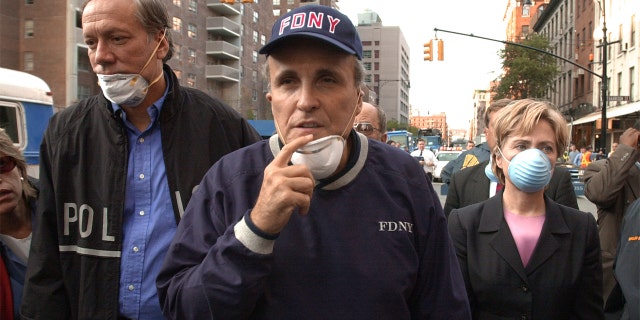
New York Governor George Pataki (L), New York City Mayor Rudolph Giuliani (C) and US Senator Hillary Rodham Clinton (R), tour the site of the World Trade Center disaster on 9/11/01 in New York.
(ROBERT F. BUKATY/AFP via Getty Images)
“That was that,” Bukaty said. “So they got near Ground Zero, but they didn’t make it all the way in there. That day was the first time that Mayor Giuliani got that close to Ground Zero.”
“I remember at one point, a woman spotted him and started calling his name and he went over to her, she was an elderly lady,” Bukaty added. “And I remember he pulled down his mask and he gave her a hug and he listened to her and her story was that her son was missing.”
He continued: “In the days that followed, Giuliani became sort of a hero.”
DAUGHTER LOOKS BACK ON FATHER’S HEROISM ON 9/11
Twenty years later, Bukaty is still an Associated Press photographer, though he primarily takes photographs for human interest stories. He’ll also be covering the 2022 Winter Olympics in China, he said.
“I shoot a lot of feature photos,” Bukaty told Fox. “I do a little bit of everything, but primarily I work on human interest stories and not a lot of spot news stories.”
He said he covered the aftermath of Hurricane Katrina and he still helps cover presidential elections.
Meanwhile, Mills continues to cover politics and the White House, as well as every summer and winter Olympics.
“I’m blessed to be able to cover politics the way I do,” Mills said, adding: “Being the witness to a lot of history within the White House, the different administrations, I couldn’t ask for a better job.”
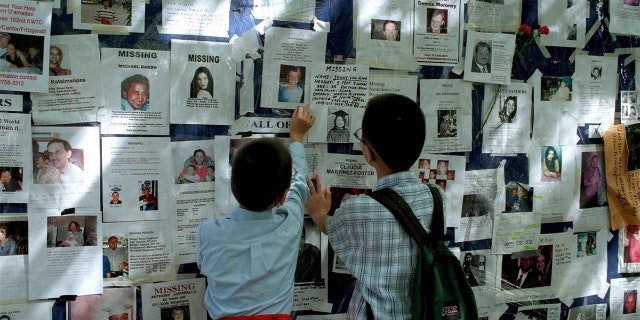
Two boys look at a poster of missing people outside Bellevue Hospital in the week after 9/11/01.
(JZB)
“Firefighters and ironworkers were splitting beams all night trying to get to anybody.”
— Yoni Brook
Brook, who now lives in Philadelphia, told Fox News that though he spent several years as a photojournalist, he decided to become a documentary filmmaker and recently directed the “Philly D.A.” series, about Philadelphia’s new District Attorney Larry Krasner.
FORMER NYPD DETECTIVE DIAGNOSED WITH 9/11-RELATED TERMINAL ILLNESS SPEAKS OUT
“A lot of what we have to do as journalists is be reactive,” Brook said. “I really wanted to devote my career to just thinking carefully about the kinds of images that go out into the world.”
“9/11 was something that sort of happened and all journalists who could cover it, covered it in their own way,” Brook added. “And I think that part of what I’m hoping to do as a documentary filmmaker is be proactive.”

Thick smoke billows into the sky from the area behind the Statue of Liberty, lower left, where the World Trade Center was, on Tuesday, 9/11/01.
(AP Photo/Daniel Hulshizer)
On the night of Sept. 11, Brook sent his photos to the Washington Post and received a call from Michel du Cille, the Pulitzer Prize-winning photojournalist who was, at the time, the photo editor at the Post.
“He told me that night: ‘You to go back to you need to go back to Ground Zero, because our photographers can’t get into the city because all the bridges and tunnels are shut down,’” Brook recalled.
Brook added that he made his own press pass and returned to Ground Zero.
“Then I just kind of snuck back down there around midnight again that night and spent the whole night in Two World Financial Center trying to stay out of the way, because at that point, the rescue was in full effect. Firefighters and ironworkers were splitting beams all night trying to get to anybody.”
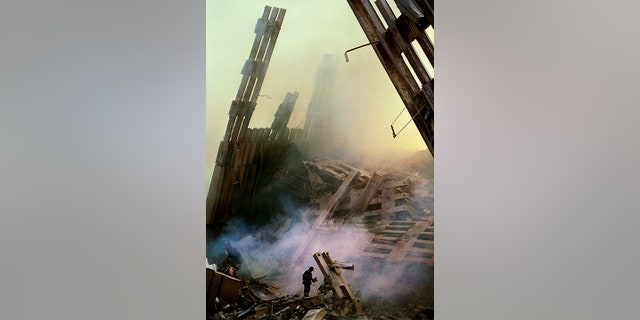
A firefighter uses a thermal imaging camera on 9/12/01.
(JZB)
The next morning, Brook took a photo of a lone firefighter.
“It was sunrise the morning after 9/11,” Brook said. “You could look at it and see the immense task ahead of everybody. And also, there was just like a degree of it sinking in, that it was going to be a new normal for New Yorkers and for everybody looking at it the next day.”
Brook added about the photograph: “I only realized later when they blew [the photo] up that the firefighter was holding a thermal imaging camera. So he’s looking for heat, or signs of life in the rubble.”
Fox News’ Andrew Murray contributed to this report.
